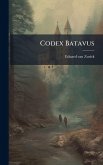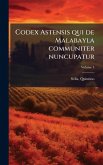The "Codex Hirsaugiensis" is a valuable historical manuscript originating from Hirsau Abbey, a significant Benedictine monastery in present-day Germany. Written in Latin, it offers insights into the religious, cultural, and social aspects of medieval life. This codex serves as a primary source for historians studying monasticism, religious practices, and the intellectual traditions of the Middle Ages. Its detailed accounts and historical records make it an essential resource for understanding the period and the role of religious institutions within it. The "Codex Hirsaugiensis" remains a testament to the enduring legacy of medieval scholarship and monastic life. This work has been selected by scholars as being culturally important, and is part of the knowledge base of civilization as we know it. This work was reproduced from the original artifact, and remains as true to the original work as possible. Therefore, you will see the original copyright references, library stamps (as most of these works have been housed in our most important libraries around the world), and other notations in the work. This work is in the public domain in the United States of America, and possibly other nations. Within the United States, you may freely copy and distribute this work, as no entity (individual or corporate) has a copyright on the body of the work. As a reproduction of a historical artifact, this work may contain missing or blurred pages, poor pictures, errant marks, etc. Scholars believe, and we concur, that this work is important enough to be preserved, reproduced, and made generally available to the public. We appreciate your support of the preservation process, and thank you for being an important part of keeping this knowledge alive and relevant.
Bitte wählen Sie Ihr Anliegen aus.
Rechnungen
Retourenschein anfordern
Bestellstatus
Storno








